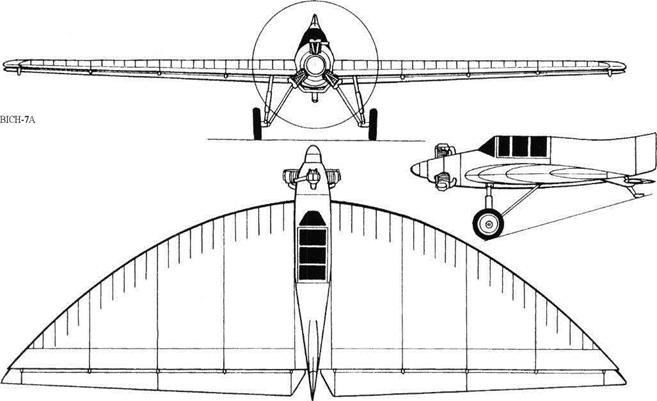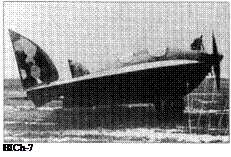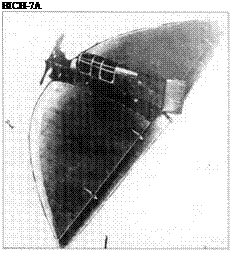BICh-7A



Purpose: To improve BICh-7, the next stage beyond BICh-3.
Design Bureau: B I Cheranovskii.
BICh followed his Type 3 with the impressive BICh-5 bomber, powered by two BMW VI engines, but never obtained funds to build it. In 1929 he flew the BICh-7, almost a 1.5-scale repeat of BICh-3 with two seats in tandem. The problem was that he replaced the central tail by rudders (without fixed fins) on the wingtips, and the result was almost uncontrollable. He modified the aircraft into the BICh-7A, but was so busy with the BICh-11 and other projects that the improved aircraft did not fly until 1932. Apart from returning to a central fin and rudder he replaced the centreline wheel and wingtip skids by a conventional landing gear. The BICh-7A gradually became an outstanding aircraft. Testing was done mainly by N P Blagin (later infamous for colliding with the monster Maksim Gorkii), and he kept modifying the elevators and ailerons until the aircraft was to his satisfaction.
This larger ‘parabola-wing’ aircraft was again made of wood, veneer and fabric, with various metal parts including the conventional divided rubber-sprung main landing gears and tailskid. The tandem cockpits were en
closed, which in 1932 was unusual. The engine was a l00hp Bristol Lucifer, and one of the unsolvable problems was that the Lucifer was notorious for the violence of the firing strokes from its three cylinders, which in some aircraft (so far as we know, not including the BICh-7A) caused structural failure of its mountings.
This aircraft appears to have become an unqualified success, appearing at many air – shows over several years.
|
Dimensions Span Length Wing area |
12.5m 4.95m 34.6 nf |
41ft 16 ft 3 in 372 ft2 |
|
Weights (BICh-7) |
||
|
Empty |
612kg |
l,3491b |
|
Fuel/oil |
93kg |
205 Ib |
|
Loaded |
865kg |
l,9071b |
|
(BICh-7A) |
||
|
Empty |
627kg |
l,3821b |
|
Fuel/oil |
93kg |
205 Ib |
|
Loaded |
880kg |
l,9401b |
|
Performance |
||
|
Maximum speed |
165km/h |
102.5 mph |
|
Range |
350km |
217miles |
|
Landing speed |
70km/h |
43.5 mph |










